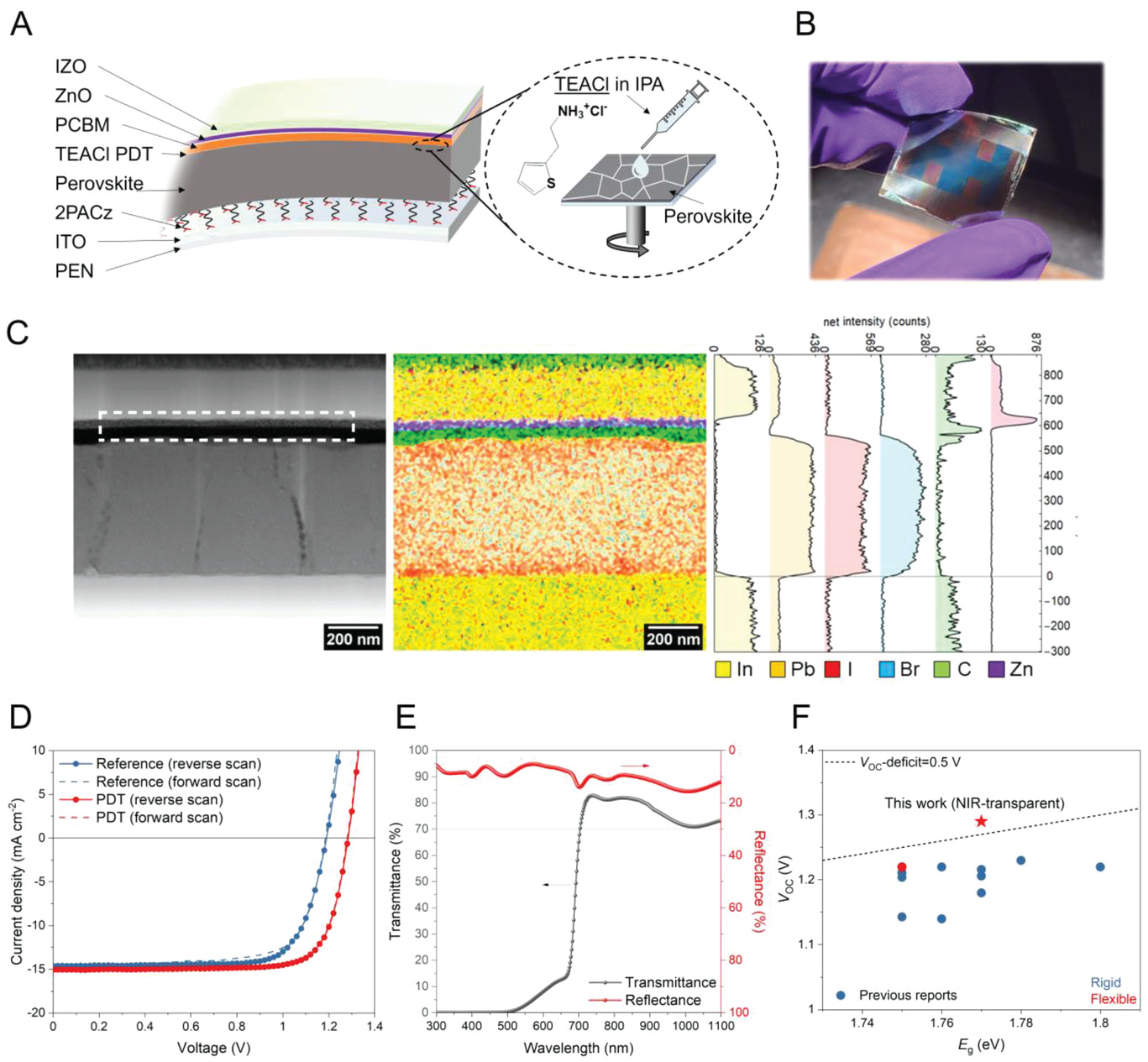On September 30, 2022 (Beijing time), Advanced Energy Materials, an international academic journal, published on line an article entitled "High Performance Flexible All-Perovskite Tandem Solar Cells with ReducedVOC-Deficit in Wide-Bandgap Subcell". The article is about the research results of a joint research project between Cong Chen, an associate researcher of the Engineering Research Center of Alternative Energy Materials & Devices, Professor Dewei Zhao, and Dr. Fan Fu of the Laboratory for Thin Films and Photovoltaics, (EMPA) Swiss Federal Laboratories for Materials Science and Technology.

“Metal halide perovskite materials have attracted enormous attention from both the academic and industrial communities due to their excellent optoelectronic properties. After a decade of intensive research, the best certified efficiency of a single-junction perovskite solar cell (PSC) has already reached 25.7%.--- However, there are two major challenges that need to be overcome to realize efficient all-perovskite solar cells on flexible substrates. First, the uniform deposition of functional layers onto the flexible substrates is more challenging than on the rigid glass due to the generally rougher surface and inferior mechanical robustness of flexible substrates. Up to now, there are only two reports on flexible all-perovskite TSCs which yielded 21.3% and 24.4% (certified) efficiency, respectively, much lower than the best value of an all-perovskite TSC (28%) reported on a rigid glass substrate. Another major challenge is the notable loss in open-circuit voltage (VOC) in the wide-bandgap (WBG) PSCs, which largely limits the progress of all-perovskite TSCs.”(Introduction)

“Among various types of perovskite-based tandem solar cells (TSCs), all-perovskite TSCs are of particular attractiveness for building- and vehicle-integrated photovoltaics, or space energy areas as they can be fabricated on flexible and lightweight substrates with a very high power-to-weight ratio. However, the efficiency of flexible all-perovskite tandems is lagging far behind their rigid counterparts primarily due to the challenges in developing efficient wide-bandgap (WBG) perovskite solar cells on the flexible substrates as well as their low open-circuit voltage (VOC). Here, it is reported that the use of self-assembled monolayers as hole-selective contact effectively suppresses the interfacial recombination and allows the subsequent uniform growth of a 1.77 eV WBG perovskite with superior optoelectronic quality. In addition, a postdeposition treatment with 2-thiopheneethylammonium chloride is employed to further suppress the bulk and interfacial recombination, boosting the VOC of the WBG top cell to 1.29 V. Based on this, the first proof-of-concept four-terminal all-perovskite flexible TSC with a power conversion efficiency of 22.6% is presented. When integrating into two-terminal flexible tandems, 23.8% flexible all-perovskite TSCs with a superior VOC of 2.1 V is achieved, which is on par with the VOC reported on the 28% all-perovskite tandems grown on the rigid substrate.” (Abstract)
Huagui Lai of EMPA (formerly a Class 2020 graduate of the Engineering Research Center of Alternative Energy Materials & Devices, Sichuan University), is the first author of the paper. Cong Chen, Dewei Zhao and Fan Fu are the corresponding authors of the paper. Sichuan University is the corresponding work unit. The work was financially supportedby the National Key Research and Development Program of China (No. 2019YFE0120000), Fundamental Research Funds for the Central Universities (Nos. YJ2021157 and YJ201955), Engineering Featured Team Fund of Sichuan University (No. 2020SCUNG102).
https://onlinelibrary.wiley.com/doi/full/10.1002/aenm.202202438
